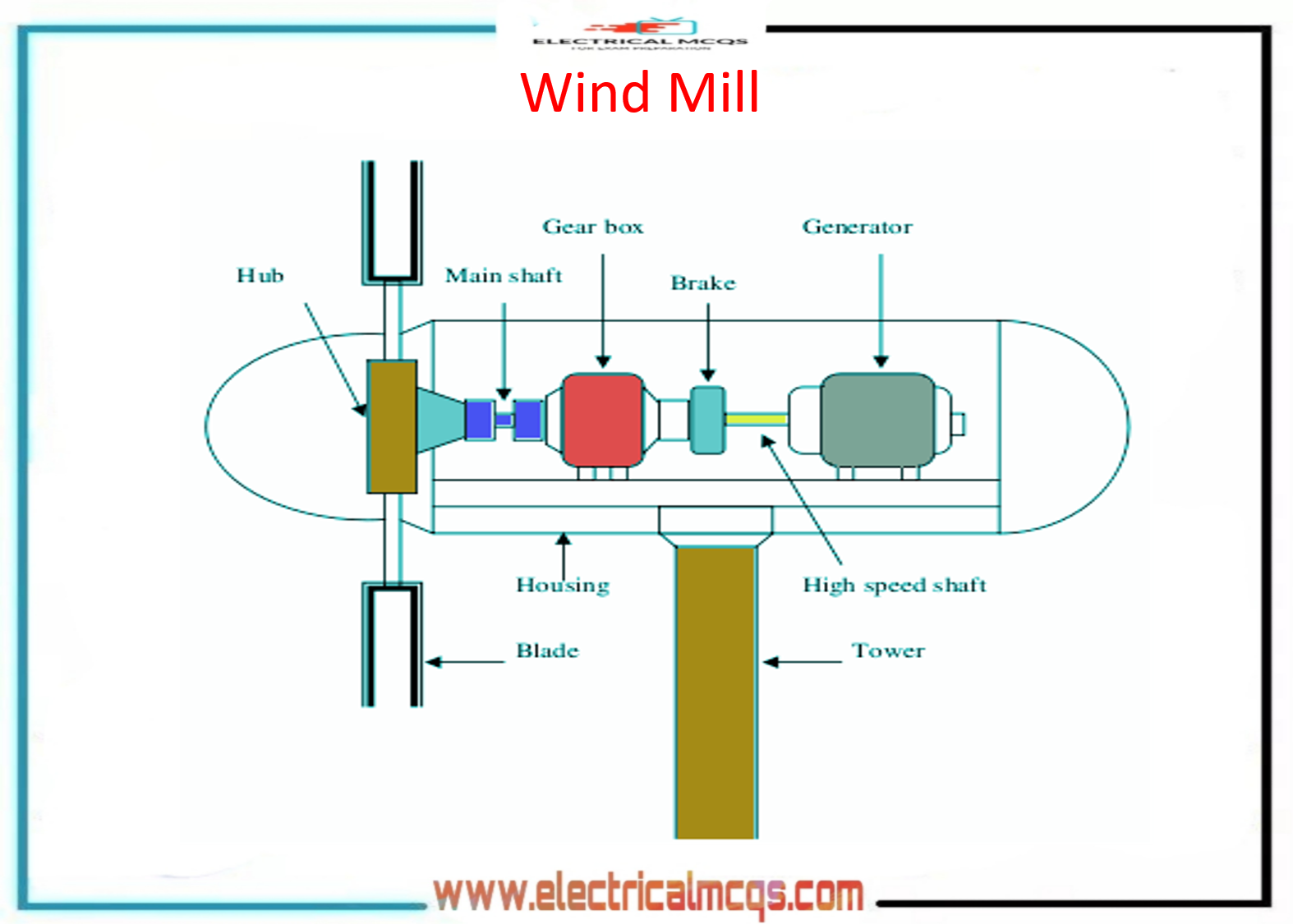A windmill is a rotary device that extracts energy from the wind and converts into rotary mechanical energy.
Blowing wind spins the blades on a wind turbine. When the wind blows, a pocket of low-pressure air forms on the down wind side of the blade.
The low pressure air pockets then pulls the blade toward it, causing the rotor to turn. This is called lift.
The force of the lift is actually much stronger than the wind's force against the front side of the blade, which is called drag.
The combination of lift and drag causes the rotor to spin like a propeller. The rotor of the turbine are attached to a hub that is mounted on a rotating shaft.
The transmission is attached to a high-speed shaft which turns a generator that produces electric power.
The electric power may be dc or ac depending on the end user's need. Direct current can be generated by driving a brushless dc generator attached to the windmill's rotor.
Simply stated, a wind turbine is the opposite of a fan. Instead of using electrical energy to produce wind, like a fan, wind turbines use the wind to generate electrical energy.
Wind turbines can be used as stand-alone applications, or they can be connected to a utility power grid or even combined with a photovoltaic system.
For utility-scale sources of wind energy, a large number of wind turbines are usually built closer together to form a wind plant.
Stand-alone wind turbines are used for water pumping or communications.
The performance of a wind power plant is characterized by the annual energy generation related to 1 m2 of area swept by the rotor of wind turbine.
Depending upon the average wind speed, the annual energy generation lies between 250 to 600 kWh per m2 rotor area.


